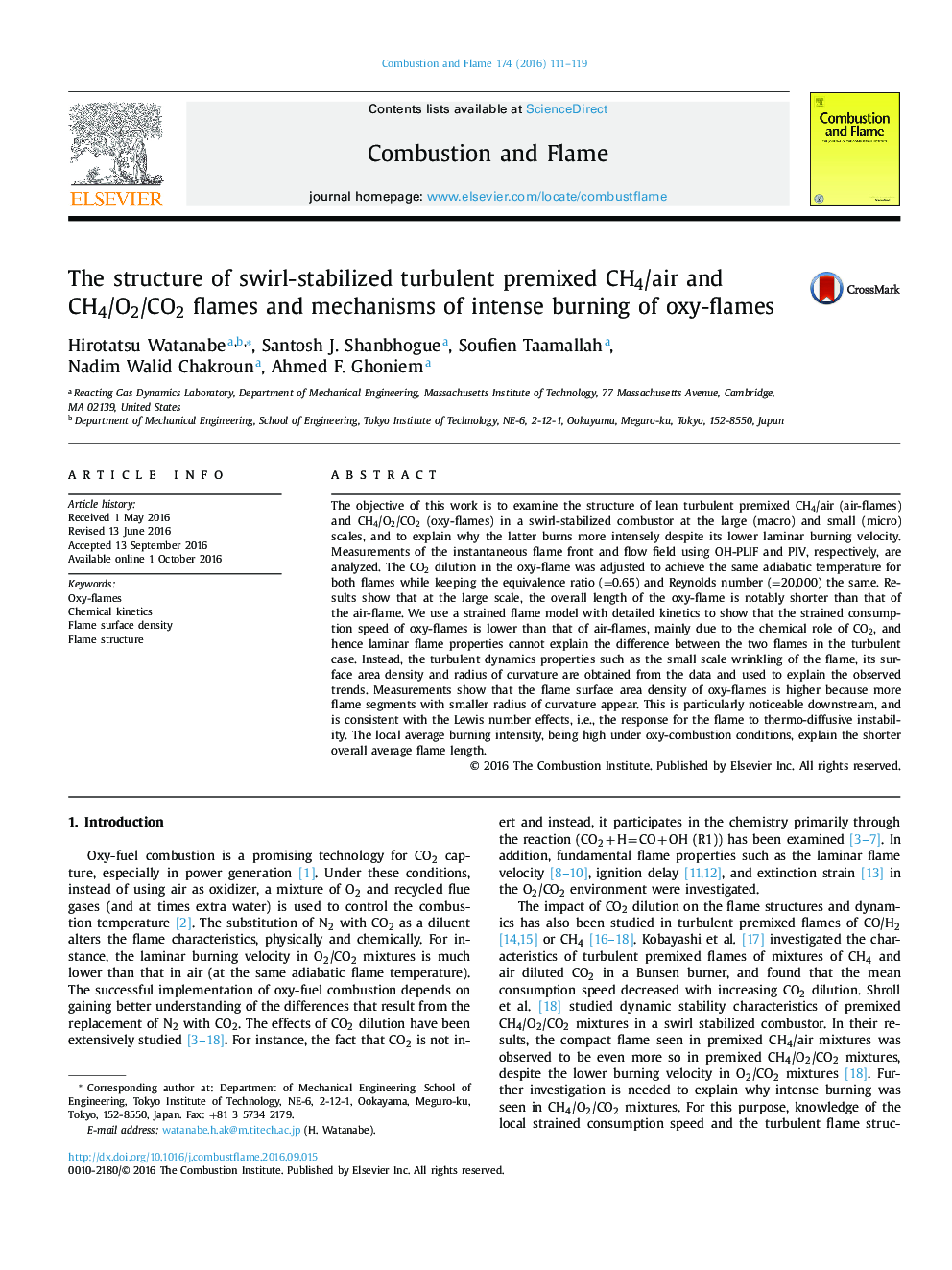| Article ID | Journal | Published Year | Pages | File Type |
|---|---|---|---|---|
| 6468315 | Combustion and Flame | 2016 | 9 Pages |
The objective of this work is to examine the structure of lean turbulent premixed CH4/air (air-flames) and CH4/O2/CO2 (oxy-flames) in a swirl-stabilized combustor at the large (macro) and small (micro) scales, and to explain why the latter burns more intensely despite its lower laminar burning velocity. Measurements of the instantaneous flame front and flow field using OH-PLIF and PIV, respectively, are analyzed. The CO2 dilution in the oxy-flame was adjusted to achieve the same adiabatic temperature for both flames while keeping the equivalence ratio (=0.65) and Reynolds number (=20,000) the same. Results show that at the large scale, the overall length of the oxy-flame is notably shorter than that of the air-flame. We use a strained flame model with detailed kinetics to show that the strained consumption speed of oxy-flames is lower than that of air-flames, mainly due to the chemical role of CO2, and hence laminar flame properties cannot explain the difference between the two flames in the turbulent case. Instead, the turbulent dynamics properties such as the small scale wrinkling of the flame, its surface area density and radius of curvature are obtained from the data and used to explain the observed trends. Measurements show that the flame surface area density of oxy-flames is higher because more flame segments with smaller radius of curvature appear. This is particularly noticeable downstream, and is consistent with the Lewis number effects, i.e., the response for the flame to thermo-diffusive instability. The local average burning intensity, being high under oxy-combustion conditions, explain the shorter overall average flame length.
